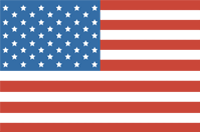"She only has herself to blame." Andy Buchanan/ POOL/AFP/Getty Images.
The SNP’s triumph in last week’s Scottish elections came as no surprise: it was the party’s 11th election victory in a row. Instead, it was the downfall of the Scottish Tories and resurgence of Scottish Labour in second place that made headlines. Yet while Labour certainly did regain ground in Scotland, to the extent that it is now the primary opposition to the SNP, its victory isn’t all it’s been cracked up to be.
In reality, the party’s 20-seat gain was very modest, under-shooting prediction models and tying with the Lib Dems, while falling behind the SNP, who were not expected to make any gains. Scottish Labour leader Anas Sarwar may believe that “Scottish Labour is back“, but his party recorded its second-worst local result in half a century.
Meanwhile, the Scottish Tories have lost a staggering 63 seats. No doubt they will be shouting from the rooftops that it’s all because of Partygate and Douglas Ross’s humiliating U-turn on his call for Boris Johnson to resign over it. But the Conservative result is not as bad as it looks: in terms of seat pluralities, the Tories have placed first in five local authorities, ahead of Labour in three. They’ve also made gains in a few strategic areas such as Moray, Aberdeenshire and Ayrshire.
Nonetheless, there is little room for complacency. The Scottish Tories’ popularity appears to have reached a peak in 2017 in the wake of the Ruth Davidson surge and a fierce unionist backlash against Sturgeon’s plans for a second independence referendum. It has declined in the five years since, and the party’s current vote share of 19.6% will only fall further in a national election for Westminster or Holyrood, where far larger numbers of younger, working class and urban voters will turn out. And of course, the leadership and macroeconomic problems that dogged the Tories across Britain (where their net loss of 487 seats far outstripped the worst expectations) are only set to get worse.
Despite its underwhelming victory, Scottish Labour’s reclamation of the second place mantle matters symbolically — the SNP’s preferred opponents are Tories, who give them the opportunity to define themselves against unpopular Westminster rule. Scottish Labour coming back from the dead would therefore complicate the SNP’s monopoly on the centre-left, even if there’s reason to believe Anas Sarwar has learnt little from the failures of the Jim Murphy era, if his current insistence that no local government Labour groups cooperate with the SNP is anything to go by.
What does this mean for the fate of the independence movement? There has been talk of the issue being forced onto the back foot by the war in Ukraine and the cost-of-living crisis. Yet these developments only seem to have had a marginal impact on polling, which has hovered between 50-50 and 47 Yes – 53 No. In fact, if anything this election is further proof that the Scottish electorate increasingly favour independence. The vote-share of pro-independence parties was around 45%, while that of pro-union parties amounted to 55%. That’s quite a change from 2017, when 40% of votes were for pro-independence parties compared to 60% for unionist ones — especially when one takes into account that voters in local elections are more likely to be older, more middle-class and unionist compared to national elections.
Just after the election, a Panelbase survey for the Sunday Times found that more than 55% of Scots want an independence referendum to be held within this parliamentary term. Since the vote, senior Scottish Conservative grandees have said that opposition to Indyref2 is no longer working on the doorstep. The party’s former head of communications has openly acknowledged that the issue of the SNP dominance won’t be solved until a referendum is held. If this was meant to be an election for Scots to send Sturgeon a “no to Indyref2” message, it certainly doesn’t seem to have been interpreted by unionist parties in that way, to say nothing of voters themselves.

 Main Edition
Main Edition US
US FR
FR





Join the discussion
Join like minded readers that support our journalism by becoming a paid subscriber
To join the discussion in the comments, become a paid subscriber.
Join like minded readers that support our journalism, read unlimited articles and enjoy other subscriber-only benefits.
Subscribethe only way to guarantee an over whelming majority for an independent Scotland would be to allow the English to vote for the choice as well.
I agree with much of your analysis, though I’d question the idea that many of the SNP top-brass actually want to achieve independence at this point.
They surely want the ‘fight’ for independence to continue, as it is nominally their raison d’être, yet if they achieved it, then what? They’d be like the dog that feels obliged to chase the car – but what the hell is he planning to do if he ever catches it?
Now that the Salmond/Sturgeon ‘war of the fishes’ is resolved, the Scots Nats must hope they never achieve independence. As long as there’s a common enemy south of the border then they’ll hold together as a party. Remove that and it’ll be like a return to clans squabbling over who has the best claim to the throne of Scotland.
As a Govt of an independent nation they’d have to own up to the parlous state of the country’s finances and the fact that, loath though they are to admit it, the Scottish Govt is utterly reliant on handouts from the rest of the UK to survive.
I’d go so far as to suggest that the real antipathy the SNP feel towards England – or Westminster – is down to the fact that they know, despite all the rhetoric, that Scotland simply is not a viable country without the financial support they receive from their despicable English neighbour.
You could justifiably argue that under the current arrangement a Scot has more say in policy making than their English counterpart. Given the number of powers that are now devolved to the Scottish parliament, given the disproportionate power Scots MPs have over their cousins south of the border, with no reciprocal arrangement where English MPs have any say in Scotland, given the pretty sizeable discrepancy in expenditure, can anyone explain why Scots Nats feel so hard done by Westminster?
If they think they’d ‘take back control’ of Scotland by quitting the union and becoming a tiny, heavily indebted country in the EU then good luck with that. I fear they’d be on the wrong end of an austerity program that would make Greece’s look like it was a mild squeeze.
The humble crofter, Ian Blackford, has quite successfully spun fairy tales to convince many Scots they get a raw deal. But try this analysis from Bloomberg. They have no axe to grind against the Scots, and certainly no love for Boris Johnson’s Govt.
“Before the pandemic, the Treasury in London already subsidized Edinburgh by up to £12 billion a year. Scotland’s implicit budget deficit pre-crisis was 8.6% of GDP, about 6 percentage points higher than the U.K. as a whole, according to the Institute of Fiscal Studies. Post-Covid, the Office for Budget Responsibility estimates those numbers could balloon to a 19% implicit deficit. Total borrowing was already equivalent to £2,776 per person in Scotland as opposed to £855 for the U.K.
Pre-Covid even the SNP’s own Sustainable Growth Commission proposed holding down growth in public spending to 0.5%, “implying cuts to areas other than health, social care and pensions.” Post-Covid that would mean sharp tax increases and spending cuts.
As it stands, London’s subsidies play into the nationalists’ hands, allowing them to implement popular — and expensive — policies. They bankroll spending on services that are largely devolved to the Scottish government: the abolition of prescription charges, university tuition fees and free personal care for the elderly. Scotland spends 22% more per person on education than England, with no better results. Some 10% of Scottish pupils are thought not to have been in education regularly since the start of the Covid outbreak.
Even if Scotland gained EU admission — a big if given Europe’s fear of encouraging separatists — the country would have a hard border with the rest of the U.K. over which 60% of its exports flow.”
If Scotland had to live within their means, without the ability to devalue their currency, the cuts to services would dwarf even the drastic measures that killed off the Greek economy.
I’ve certainly no wish to see such misery inflicted on Scotland, but it would be interesting to see Ms Sturgeon try and explain that one away, particularly given how she railed against the vicious Tory Austerity – by which she means those merciless and savage cuts that saw public spending wantonly slashed from £610 billion in 2015 to only £870 billion last year.
Without Westminster as the scapegoat she and her party would be exposed for the mess they made of devolved powers, and they’d be looking at a truly ruinous future.
I’m delighted the SNP have done so well. It is only right and proper that they should be left making all the $hit, unpopular, decisions because of the evisceration of council finances. It’s not just education and the NHS that’s failing in Scotland, but local councils too, several of them perpetually hovering not far above going bust and constantly having to make swinging budget cuts just to try and square the circle, in fact it’s ALL the local council seem to do, discuss who next to make redundant, what asset to divest themselves of or what essential service to close. The very fabric that holds Scotland together is, bit by bit, gradually coming apart at the seems, but then as the old saying goes “ He who pays the piper calls the tune” and as you should be aware, the Scottish ‘government’ likes to hold everyone on a very tight leash, all the better to control them with if they happen to even consider going off message.
I loath the party political emphasis that seems to have been applied to local elections this time around, is it just me, or does it seem as if the media have doubled down on pushing a party line and allegiance during this election, as some sort of bell weather ad-hoc poll on the popularity of the government in Westminster or Holyrood ? All councillors should be independent of party whips (especially those from afar) .
I absolutely agree.
This piece is not reflective of the reality that I see on the ground and in the stats where despite alleged “success” less than 40% of a low turnout vote was for pro indy parties, and the quoted panelbase poll seems to be an outlier…then again the writer who describes himself as a “freelance election analyst” omits to include some other affiliations namely…. “SNP member, independence activist with RIC and the RSP”
Aha. Thanks for that. Whenever I see someone quote a Panelbias poll I narrow my eyes sceptically: I still recall the nats skewing them deliberately via social media all the way up to September 2014!
This article is utter rubbish. The Tories suffered a setback – their performance was not “staggeringly bad”. They increased their vote share in three councils, and are 100 seats ahead of what they scored in 2007 which was Ruth Davidson’s first local election as leader. Nor does “momentum” continue to be with the nationalists. The SNP have stalled for years. Under Sturgeon they are scoring consistently at 47% – high and consistently high, but she cannot get any higher. Salmond actually had better numbers. That panelbase survey also stated only 29% of voters want a referendum within Sturgeon’s timescale of 2023 – even 36% of SNP supporters don’t want one by then. An illegal referendum would be boycotted by unionist supporters and we would be Catalan territory. Actually some unionists want Sturgeon to go down this route – but she won’t.
The SNP leaders all agreed that the last independence referendum was “once in a generation”. Their words.
As an Englishman I hope that one day soon we’ll be rid of that waste of space from the body politic so I don’t have to keep subsidising the Scottish people.
Could it be that the population of Scotland have finally realised how their ‘life chances’ are entirely dependent on the extraordinary generosity of the English Taxpayer?*
(* ditto Northern Ireland.)
Yes it makes me laugh when Sinn Fein talk about spending more on the NHS. In the Republic you only get free health services up the age of six. Visit to A&E is €100 if you haven’t been to your GP first to obtain a referral letter. So, most emergencies then. By the way, GPs charge €50 for that letter. And there is more like that.
The Euro health consumer index 2018 report (so pre-Covid to avoid misunderstandings) report ranks the accessibility of Ireland’s Health system as the worst in Europe, that’s for accessibilty with the overall ranking on all features as 22nd of 35. The NHS has nothing to write home about as it was 16th of 35 But Frying pan into the fire comes to mind and at least you don’t have to pay cash at A&E in the UK.
I for one am fed up with all this “permanent revolution”. As I have said before on these boards, I am of the view that the SNP want to campaign for independence, not actually have to deliver it or make it work without English subsidies.
So lets have a referendum on whether the rest of the UK wants to fund Sturgeon’s grandstanding. Vote yes and the tap gets turned off in a year, you are on your own mates. Vote no and the Scottish Parliament has reduced powers so they can never hold the rest of us to ransom again.
I think the SNP should be given IndyRef2, and the Unionists should run a very low-key campaign based on the slogan “Its up to you – go if you want to.” I think the sudden realisation of having to be responsible for their choice, rather than being able to complain endlessly about how unfairly they are treated by the English, might, just might, cause some of them to think twice.
You’re not taking into account the level of blind fanaticism that exists, especially in the urban/university/public sector/leftie/woke cohort. The uneasy alliance between them and the stereotypical angry loons personified by Jack Doherty’s comedy character McGalashan seems to be holding firm. Reasoned logic just bounces off. The SNP gained power by outflanking Labour’s hard left in order to capture the ‘anywhere’ vote. It worked.
Look at it from the SNP point of view… they press ahead with an illegal referendum, at some cost, and risk losing it. Even if they won, it has little chance of being implemented any time soon. You would have to be desperate to take such risks. Are the SNP that desperate?
There is no possible advantage to the SNP holding an unlawful referendum. I would imagine that the Unionist vote would abstain and not take part. So, it would be a joke. But let’s say the Unionists decided to indulge enough to take it out of joke territory and voted. If the Unionists won then it would be a rather large blow to the SNP. If the Nationalists won then it would still be illegitimate and have no effect… and it would set back the circumstances in which Westminster might allow a lawful referendum. Far from adding pressure for Westminster to allow IndyRef2 HMG would simply state that the SNP was constitutionally untrustworthy on the matter and that HMG should wait for a more responsible administration in Holyrood.
But I think they should go for it if they are feeling lucky. Go ahead and make Boris’ day.
Remember when the Tories gave the people a referendum for Brexit. They believed it would never happen, a safe bet! They were wrong and they then had to follow it up much like another poster mentioned, “like a dog obliged to chase a car”. Independence would be a fiscal disaster for Scotland and the thousands of Scots who live in England. The problem is the SNP like to bang that drum, rile up their base and march on. However, I don’t think most of them actually want Independence as they know exactly how bad it will be for the country.
This all spells a slow death for the union with the nationalists endlessly circling a declining husk, waiting for the moment when nationalism is strong enough and the union weak enough for them to deliver a fatal blow.
The conservatives could do something about this by neutering Bliar’s devolution settlement but they won’t because they’re a unionist party in name only.